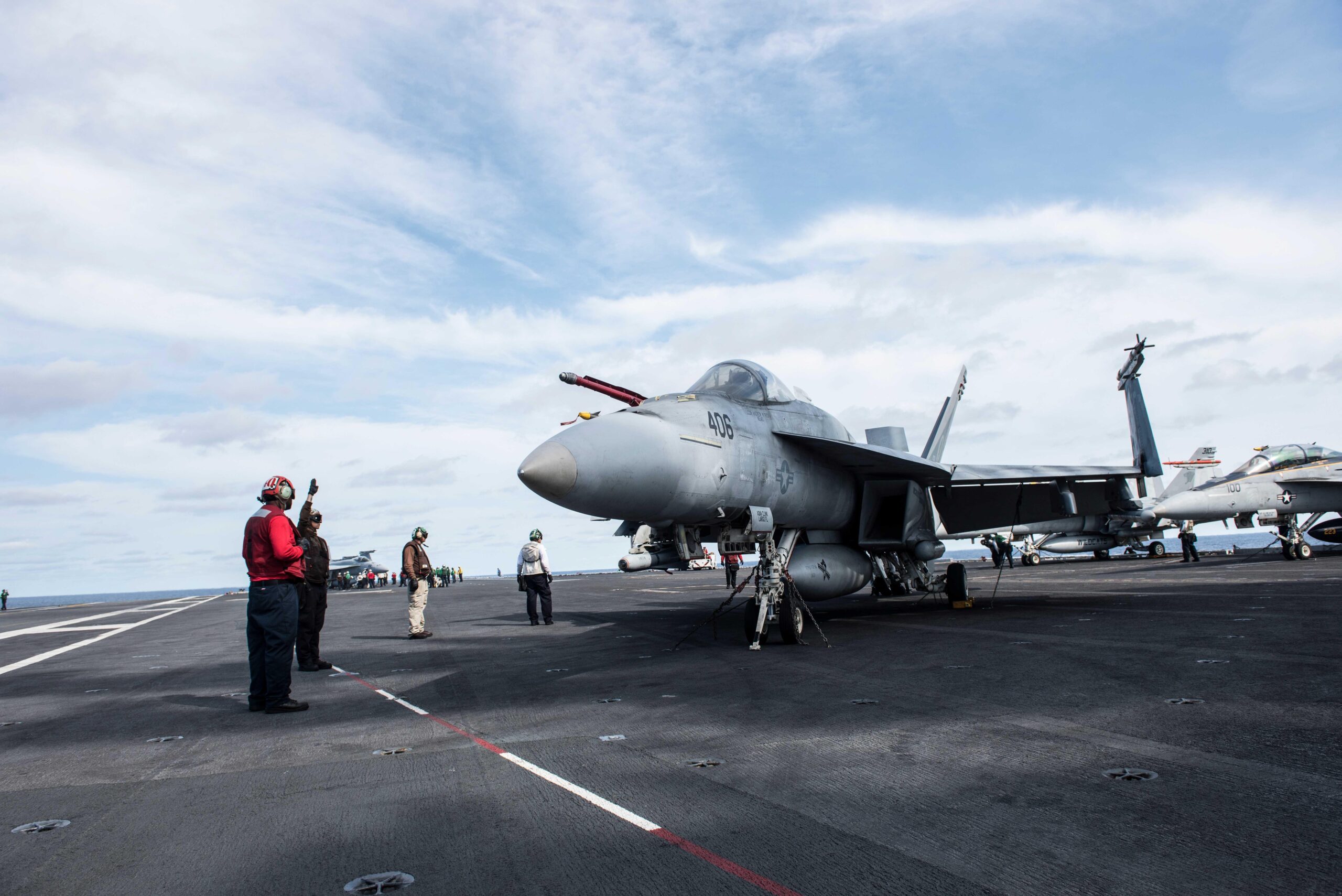
Second US Navy Fighter Jet Lost in Red Sea This Month
A United States Navy F/A-18 Super Hornet fighter jet crashed into the Red Sea on May 6, marking the second such incident involving the USS Harry S. Truman aircraft carrier in just over a week. A defense official confirmed the incident to USA TODAY, stating that the jet went down while attempting to land on the carrier.
Fortunately, both pilots on board ejected safely from the aircraft and were subsequently recovered. They sustained only minor injuries.
The incident occurred after the fighter jet’s arrestment failed upon landing. The arrestment system is a critical component of aircraft carrier operations, designed to rapidly decelerate landing aircraft. The system utilizes a series of cables stretched across the flight deck that are engaged by a tailhook on the aircraft. In this case, the jet’s devices did not properly engage with the landing area, causing it to go overboard.
This is the second time in recent days a fighter jet went off the USS Harry S Truman in the Red Sea. On April 28, another fighter jet fell off the Truman as sailors towed the aircraft into the hangar bay.
All personnel were accounted for in the April 28 incident, and one person sustained a minor injury. The Navy reported that it lost control of the fighter jet before it fell into the Red Sea. An investigation has been launched to determine the cause of that incident.
The USS Harry S. Truman Carrier Strike Group has been deployed in the Middle East for several months and is involved in operations to counter Iran-backed Houthi fighters in Yemen.
An F/A-18 fighter jet can cost $60 million, according to the Naval Air Systems Command, making these losses a significant financial setback.
The news of another lost fighter jet comes at a sensitive time, just hours after President Donald Trump announced that the U.S. will immediately end airstrikes on Houthi militants in Yemen. "We will stop the bombings," Trump announced from the Oval Office. The group also agreed to stop attacking U.S. vessels. According to Reuters, the ceasefire deal does not include Israel.
The loss of these aircraft raises questions about the operational tempo and potential risks associated with naval deployments in the region.
The proximity of the two incidents involving the USS Harry S. Truman will likely prompt a thorough review of safety protocols and maintenance procedures. The Navy will be keen to identify any common factors or systemic issues that may have contributed to both incidents.
The Red Sea is a strategically important waterway, and maintaining a strong naval presence there is vital for protecting U.S. interests and ensuring regional stability. However, the recent incidents underscore the challenges and risks associated with operating in this environment.
The investigations into the two incidents will aim to determine the root causes of the equipment failures or human errors that led to the loss of the aircraft. These investigations will involve detailed analysis of flight data, maintenance records, and witness testimonies.
The results of the investigations will be used to implement corrective actions and prevent similar incidents from occurring in the future. This may involve changes to training procedures, maintenance schedules, or equipment design.
The F/A-18 Super Hornet is a versatile and widely used fighter jet in the U.S. Navy. It is capable of performing a variety of missions, including air-to-air combat, air-to-ground attack, and reconnaissance. The loss of two of these aircraft in quick succession is a blow to the Navy’s operational readiness.
The incidents may also have implications for the Navy’s budget and procurement plans. The cost of replacing the lost aircraft will add to the financial burden on the Navy. It may also prompt a review of the Navy’s overall strategy for maintaining its fleet of fighter jets.
The events surrounding the USS Harry S. Truman will undoubtedly be closely scrutinized by Congress and the public. There will be demands for accountability and transparency as the investigations unfold.
The Navy will need to demonstrate that it is taking all necessary steps to ensure the safety of its personnel and equipment. It will also need to reassure the public that it is committed to maintaining a strong and effective naval force in the Red Sea region.
The incidents highlight the inherent risks of military operations, even in peacetime. The loss of these aircraft serves as a reminder of the sacrifices made by the men and women who serve in the armed forces.
The two pilots who ejected from the fighter jet on May 6 are fortunate to have survived the incident with only minor injuries. Their safe recovery is a testament to the effectiveness of the Navy’s search and rescue capabilities.
The Navy will continue to operate in the Red Sea region, but it will do so with a heightened awareness of the risks involved. The lessons learned from the recent incidents will be used to improve safety and operational effectiveness.
The incident serves as a stark reminder of the challenges and complexities of modern naval operations. It also underscores the importance of vigilance, training, and maintenance in ensuring the safety and effectiveness of the U.S. Navy.
The investigation into the recent fighter jet incidents are ongoing.
